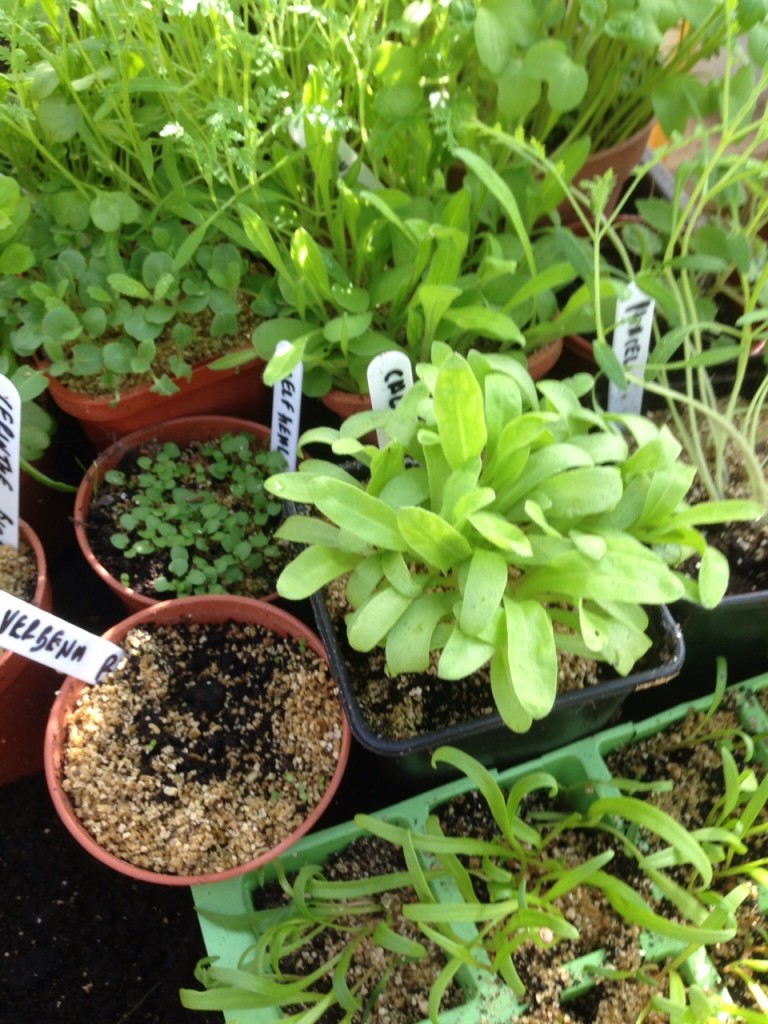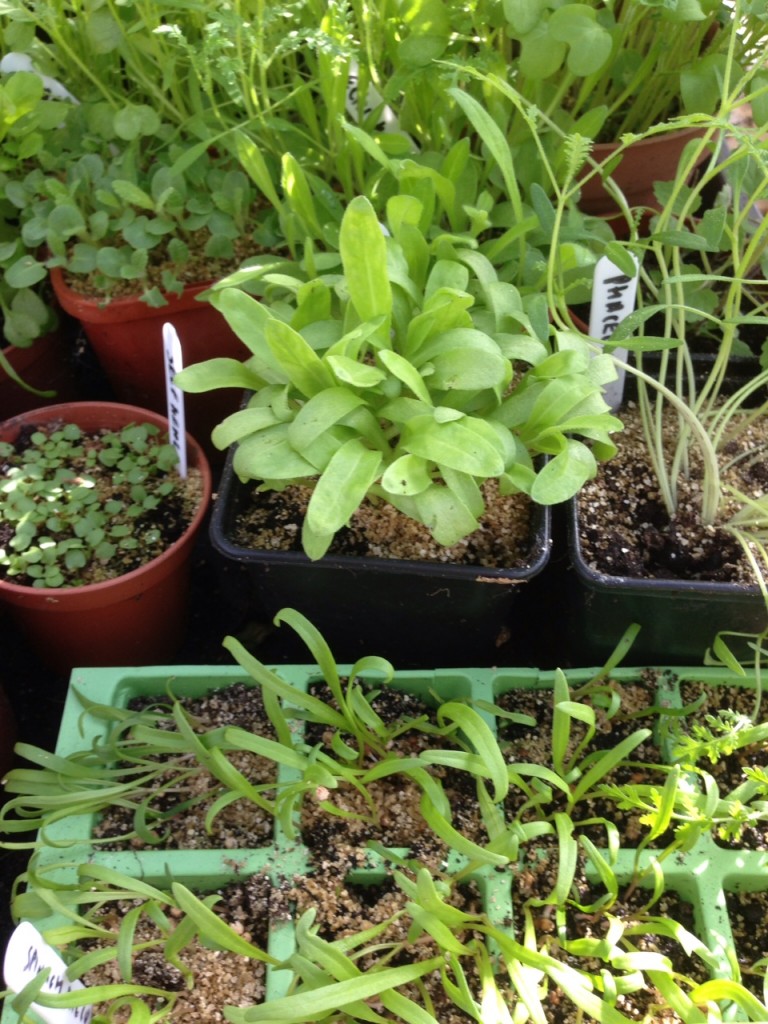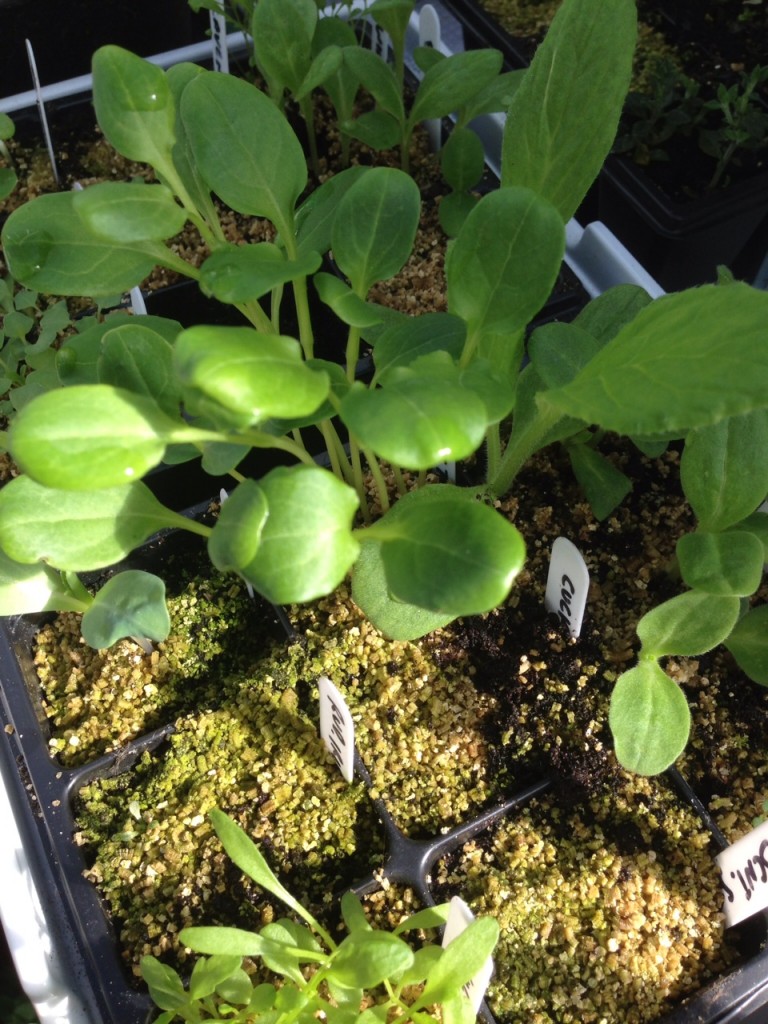The greenhouse is bursting with germinating seeds, flourishing seedlings and rooting cuttings. The aroma of spring is saturating every breathful of air and it smells fantastic. Rich, warm and vibrant, spiced with plenty of freshly made oxygen from the thriving plants. Spring is such an animated season in the greenhouse. Every new plant emerging from the wizened brown specks we call seeds, is a tiny miracle and a herald for the season ahead.
It’s literally magic and we all play a part in it, every time we sow seeds, take cuttings and tend to the plants in our gardens and greenhouse. Forget the smart phone and technology, when the power goes off and the lights go out, we can still garden and grow and enjoy nature without the need for high tech kit and power.

I don’t heat my greenhouse. By April hopefully we are past the danger of any severe cold snaps, but it is always a risk. My seedlings are all molly coddled in layers of protection, starting underneath the unheated propagators and pots where recycled pizza polystyrene disks insulate from below. The seeds are sown in top quality seed compost, something that always raises eyebrows when I try and share information with other growers and gardeners.
Many choose to use multipurpose compost or even home made compost and while I accept that it will work, I prefer to give my seeds the very best possible start. Sterile seed compost has just the right balance of ingredients to promote excellent drainage around the seed. The low nutrients avoid any root scorch caused by fertilisers and the sand content not only improves the drainage, but it also tickles the seeds into action, abrading the seed coat and encouraging good root formation. One bag of seed compost goes a long way, especially when using modules and once the seedlings are strong and growing well I can transplant them into larger pots of potting on compost or multipurpose compost if I prefer.

This year I’ve added an extra ingredient to my seed sowing ritual. Vermiculite. It’s something I’ve seen many horticulturists and gardeners use over the years but I’ve never felt the need as my seeds usually grow very well. I’m not even sure why I bought a large bag of it last season. I didn’t use it then, but decided this spring to add it to the surface after sowing seeds.
Vermiculite has had a good PR campaign. If you read the hype you’d be forgiven for thinking it was a new high tech invention, when in fact it is a naturally occurring mineral mined in far off places such as South Africa where it is a by product of copper mining. It’s been used by generations of gardeners.
For sowing seeds it provides an extra layer of insulation over the seeds, allowing light to still reach the germinating seeds, while protecting them from extremes of temperature. It’s water retentive and aids rewetting, holding moisture around the developing seedling without waterlogging.
It reduces damping off, probably because it absorbs the excess moisture and condensation created around the germinating seeds and if mixed into the compost it enhances drainage and promotes stronger, faster root development. It’s also clean and sterile -so its easy to use and safe to handle in this world of bug phobic, risk averse, health and safety obsessed world – rather hilarious when we gardeners rely on microbes to digest our compost and keep our garden soil healthy, but that’s for another day.

But back to the matter in hand. Has it made a difference? The jury is still out.
What I do know is that I’ve only had one tiny outbreak of damping off, which I actually staved off by potting up the unaffected seedlings into clean compost with fresh vermiculite. I’ve been watching those small cosmos seedlings for more than a week and so far they seem to be fine. Otherwise, I’ve sown and grown dozens of varieties of flower and vegetable seeds this spring with this extra layer – all with great success. A few weird and wonderful seeds are still to germinate.
Melianthus major are possibly the only ‘no show’ seedlings so far, but they do take a little while to germinate (about three to four weeks) and they may yet put in an appearance. Some seedlings such as the lavender and agastache are still pushing their way through their vermiculite cover; others are forest-like and ready to pot on. But all in all I’m very happy with my added magic ingredient and expect to be experimenting with it a little bit more this season. Watch this space.


